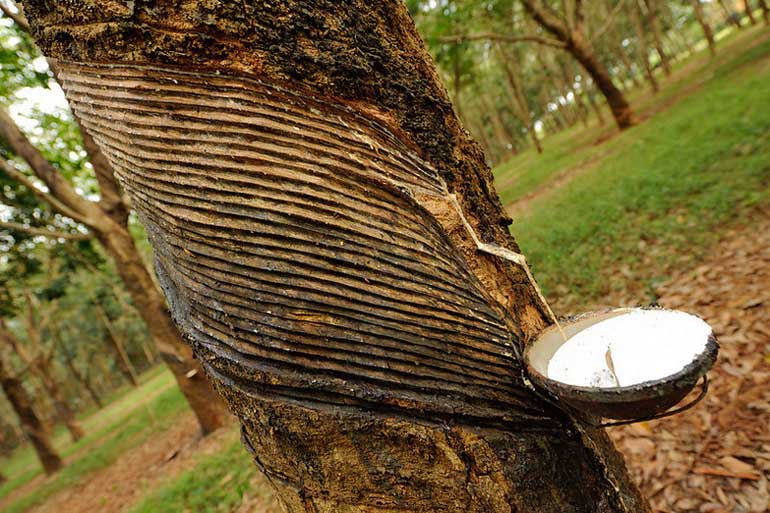Tuesday Nov 26, 2024
Tuesday Nov 26, 2024
Friday, 5 February 2016 00:00 - - {{hitsCtrl.values.hits}}

JAKARTA/BANGKOK (Reuters): Asia’s top rubber producers have agreed to cut exports by 615,000 tons for six months from March, moving to lift prices that have tumbled amid excess supply to their lowest since the global financial crisis.
Farmers and traders were not impressed, however, saying the cuts – which account for nearly 6% of global natural rubber output – were too small to have a lasting impact.
Previous efforts by Asian producers to curb exports have given only fleeting support to prices, unable to counteract a chronic glut and a slowdown in top rubber importer China.
Still, benchmark rubber futures in Singapore and Japan rallied 2-3% on the news, having last month sunk to their lowest levels since end-2008 to early 2009.
Thailand, Indonesia and Malaysia, which produce nearly 70% of the world’s natural rubber, said in a joint statement on Thursday their move would address a decline in rubber prices that has had “a direct effect on the income of rubber smallholders in our three countries.”
Thailand will cut exports by 324,000 tons, Indonesia by 238,740 tons and Malaysia by 52,260 tons, according to the International Tripartite Rubber Council (ITRC), which groups the three producers.
“The three countries’ ministers believe that cutting exports and boosting domestic use of rubber will drive up prices and fix the price slump, making prices fair for rubber farmers,” Thailand’s agriculture ministry said in a statement.
Farmers in Thailand, the world’s biggest rubber producer and exporter, said the volume cut was “too little”.
“In order for export cuts to have any impact on global prices the cut has to be at least one million tons,” Saksarit Sriprasart, a leader of smallholder rubber farmers in Thailand’s southern Trang province, told Reuters.
Cut output, not exports
Thai rubber farmers have threatened protests and demanded help as they are battered by low prices, prompting the state to launch intervention measures.
Previous efforts to curb supply, though, have lifted prices only temporarily. In 2014, the ITRC members also agreed to export cuts, and before that, they collectively cut shipments by 300,000 tons in 2012-13, or 3% of 2012 global output.
Instead of reducing exports, rubber producers should cut production as “a better strategy moving forward,” said a rubber trader in Kuala Lumpur.
On Thursday, besides cutting exports, the three countries also agreed to increase domestic consumption of rubber, including for road and railway construction.
“We are optimistic with joint implementation of these measures, rubber price will recover and continue to be fair and remunerative to all smallholders and other stakeholders in the natural rubber industry,” the ITRC said in the statement.
In Vietnam, another major rubber grower, farmers have limited annual output to one million tons from 1.1 million-1.2 million tons in response to falling prices, said an industry official there.